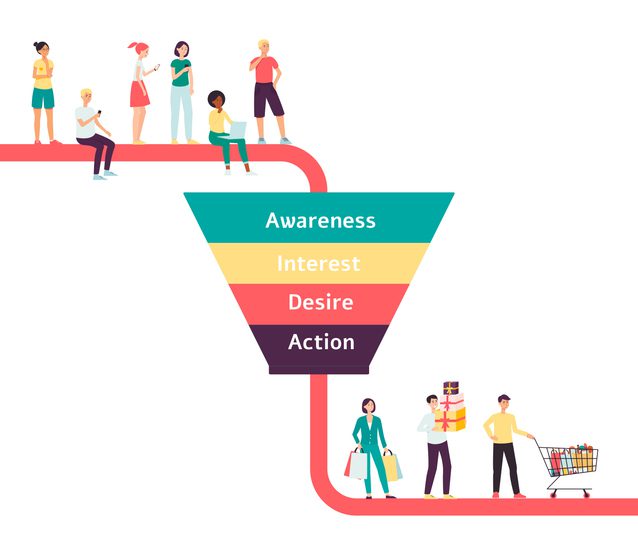Five Ways To Incorporate Direct Mail Into Your Marketing Funnel
By Ashley Jorgensen | September 15, 2021

Check out this article on Forbes!
At many companies, digital marketing and direct mail might as well exist on separate planets. This creates a host of missed opportunities, in particular because the two — especially email and direct mail — often use the same data.
Life cycle marketing is one of those programs that can work side by side with direct mail and email. Direct mail campaigns are just as capable of sending one-to-one personalized messages that address your customers wherever they are on their journey with your brand.
Twenty-five percent of consumers are still more comfortable receiving ads via direct mail and catalogs than from TV or the radio, on websites and in apps and via social media, according to 2021 LoopMe data (via Insider Intelligence). Your mailings, if you use them strategically and incorporate best practices, can reach a welcoming audience.
Direct Mail At Five Customer Life Cycle Inflection Points
Advances in printing, paper and ink technology can help you create dazzling mailings, and the postcard is still the workhorse of the direct mail industry. Now, though, a “First Class” size upgrade can make it an even more valuable partner.
Presorted First Class postcards could previously be no larger than 4-1/4 by 6 inches long. As of late August, you can now send postcards that are 6 by 9 inches via First Class Mail.
Although First Class Mail now costs a few more cents per mail piece, you get more room to send an informative message and a pleasing design — one that stands out in the mailbox, may get delivered faster than Marketing Mail and qualifies for return-to-sender and address-correction services.
Do you need inspiration to start planning? I’ve included five tips below for how to use direct mail to break through the ad clutter and strengthen your connection at five points in the customer life cycle to help you expand or retain your customer relationships.
1. Onboarding New Customers
In a retail setting, the onboarding process often includes a welcome email and one or two follow-up messages that aim to move the customer back to the website to convert (purchase, register an account, set preferences, etc.), explain the brand value and begin collecting data for later use in personalization.
Smart retailers track customer interactions with these emails. If customers don’t engage with these early mailings, they send a warning signal that they could end up leaving or going inactive.
To help stop that, you could send a postcard 30 to 45 days after onboarding to check in with the customer and perhaps include an incentive to spur them to shop.
Consider sending a thank-you note during the onboarding process. You can use this to start tracking what channels customers respond to. These types of cross-functional campaigns can start the process of building a rich profile while also maintaining that personal touch.
2. Post-Purchase Thank You
For many B2B brands, customers who buy a specific product or spend a set amount receive a handwritten thank-you note from the CEO or president. This tactic works at all levels, too, but doesn’t force the boss to sit and sign cards all day long.
Along with your post-purchase email communications, set up an automated program that sends postcards or letters that produces copy resembling handwriting. Make sure to include each customer’s name, address and other personalized information in your communications.
3. Next Purchase
The bounce-back offer is another standard retail practice. It assumes that customers who buy from you once are more likely to come back and buy again, especially if you sweeten the deal with an offer.
Via email, this bounce-back offer often includes an incentive as part of the post-purchase email series. Add a postcard drop as part of your overall marketing strategy to reach customers who might respond more quickly to postal mail than an email, app notification or web coupon.
Or consider sending a flyer with user information, insider tips and tricks, or other helpful content.
4. Birthday
Here’s a fun way to deliver another customer communication, maybe with a little gift or incentive included, that’s geared toward bringing your customers back to your website or into your stores to shop.
In the postcard, include a link to a personalized incentive based on past purchase data. If you have physical locations, include the nearest store based on your customer’s address and send it using the store manager’s name for an even more personalized touch.
5. Win-Back
Even for your email subscribers, email isn’t always the best way to send the messages that will motivate your customers to shop. If they have stopped responding to your emails, set up a postcard campaign with a unique promotional code you can track to see if they respond better to that.
This can be an independent campaign that you initiate after 90 days or more with no email activity, or it can be a component of a wider reactivation program.
Enabling Direct And Digital Worlds To Interact
Whenever you send a triggered email, you can add a signature direct mail piece. Make sure it’s thoughtfully designed, clearly branded and focused on providing value to strengthen the customer relationship.
You can be creative about using email and direct mail together at any stage of the buyer process. Lead with direct mail and follow up with an email, or vice versa — or switch it up. You’re already pulling data to populate one kind of message. Just use that same data to create a complementary message in another channel.
That brings me to my final point. Yes, coordinating digital and direct mail takes some effort up front. Any new process, especially an automated one, does. Make data collection a priority so that each customer profile has all the key fields filled in: names, addresses, birthdays, purchases and interests, activity and more.
Your reward for doing this work is a bi-directional approach to customer engagement that’s not siloed in a single channel or approach. You have various customer cohorts. Are you sure you’re catering to the right ones?
Work on your rules and automation and set up your creative work at the same time. Then, flip the switch and watch the magic happen.


